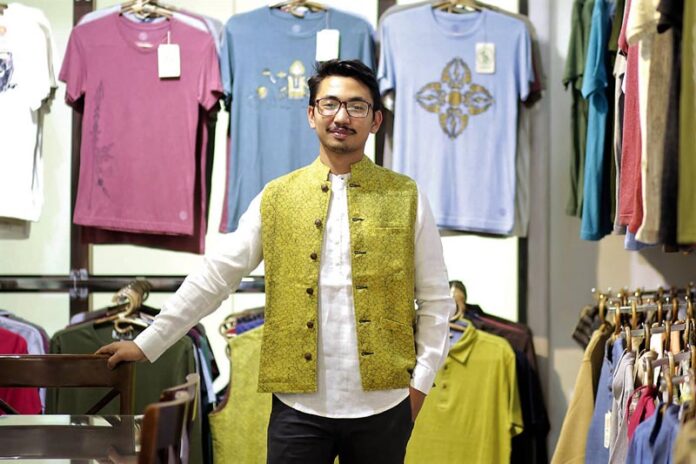Hippies flocked to Nepal in the 1960s and ’70s, drawn by the freedom to buy and smoke pot. But today, tourists are attracted by t-shirts, shawls and jackets made from the marijuana plant.
While there are still weed pushers on the streets of Thamel trying to sell you a smoke, the tourist hub is now better known for designer apparel made from a blend of cannabis fibre and cotton.
“In my business cannabis isn’t illegal. If cannabis was illegal then we wouldn’t have these products on sale,” says Yubaraj Timilsina, who started out as a vegetable vendor and now owns Hemp Headquarter, which manufactures and runs a wholesale shop for cannabis-based attire.
Timilsina and others who deal in cannabis fabric source their products from western Nepal, where marijuana cultivation is permitted for hemp production, under strict supervision of the local police. Western Nepal suffered greatly from the US-induced ban on cannabis in the 1970s, when already impoverished farmers were pushed into deeper poverty because of the loss of their cash crop.
On 26 June, International Day against Drug Abuse and Illicit Trafficking, instead of encouraging farmers to plant hemp and start a local industry, police are destroying plants in Tanahu and Chainpur.
“The cannabis bushes grow in the wild, they are not cultivated, and we collect the stems from which the fibre is sourced,” says Baburam Bohra from Bajura, the district known to produce the healthiest cannabis plants.
While the shrubs can grow up to 3m tall, those harvested for fibre are cut before they flower, which means they cannot be used for smoking. The stems are soaked in water for 10 days so that the outer layer peels off, making it easier for the pulp inside to be extracted.
The raw plant tissue is then boiled with ash and washed multiple times to produce fibre. The whole process takes up to three weeks, giving one roll of fibre 3m in length. Hemp fibre is dark tan or brown and is difficult to bleach, but it can be dyed bright and dark colours.
The fibre does not contain tetrahydrocannabinol (THC), the naturally occurring psychoactive compound that gives cannabis its narcotic property, so it will not, for example, alert sniffer dogs at airports.
Clothing and bags made from 100% hemp fabric can cost up to Rs10,000 depending on their design and size. Yet production is still limited with those bags that are made going mostly to Australia, Spain and Canada, which have legalised marijuana to varying degrees.
“I come to Nepal every six months to buy hemp bags to sell them in Spain,” says Nacho Baranas, who owns a shop in Barcelona featuring handicraft from all over the world, including Nepal.
Timilsina sells a variety of hemp-based products, including bags, shawls, shirts, trousers and yoga bags. “Foreigners like our hemp bags because they are durable and all-natural,” he says.
Thamel trader Prem Dahal is acknowledged by his peers as the pioneer of the hemp trade. He was inspired to take it up 28 years ago after travelling with shepherds in western Nepal and finding that their hardy mattresses were woven from cannabis fibre.
“Hemp fabric is stronger, more absorbent and has better insulation against heat and cold than cotton,” Dahal explains. “Hemp is environmentally friendly.”
Given that half the pesticide sprayed worldwide is in cotton plantations, hemp is a nature-friendly alternative fabric. The plant also prevents soil erosion on mountain slopes because of its thick deep root system, and the fabric can be made into at least 100 types of products.
“If hemp was fully legal, and allowed to be grown on an industrial scale, it would be as valuable as gold,” says Dahal, who is critical of MPs from western Nepal who do not push for the legalisation of marijuana, which would be a rare job booster.
Timilsina sells up to 400 hemp bags per month, but sees another threat on the horizon: cheaper Chinese bags.














